|
|
|
|
|
|
|
The very first monster-maker of ever: Willis O’Brien, best remembered for
the first version of “King Kong” (released in 1933). O’Brien had already shown his skills in year 1925 with “The lost world”, inspired by the novel from Sir Arthur Conan Doyle (and absolutely different from the story by Spielberg and Crichton, apart from dinosaurs). O’Brien created the famous stop-motion technique: building an articulated puppet with a steel skeleton and rubber muscles, then moving it a fraction at a time before shooting each frame, going on and considering that the film speed is 24 frames per second… But O’Brien used also another technique (invented by cameraman Frank Williams in 1916) which would have lasted for a long time until the arrival of computer graphics: the matte-shot, also known as the Williams process, which would have been improved by John P. Fulton for “The invisible man”. Thanks to the matte-shot it was possible to have composite scenes with actors |
|
|
and monsters models shot in “stop-motion”. Willis O’Brien left not only these valuable techniques, but also a very brilliant heir: Ray Harryhausen. Filmography 1925: The lost world 1933: King Kong 1934: Son of Kong 1949: Mighty Joe Young (Oscar for visual effects) 1956: The animal world 1957: The black scorpion 1962: It's a mad, mad, mad, mad world |
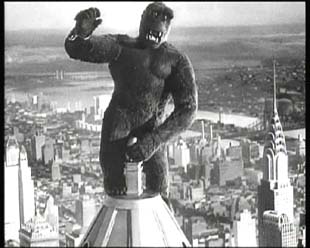 |
|
Note: to well explain the matte-shot technique, I thought to add these
images with some underlines. And to make all more understandable and clear
I preferred to show images from a more recent movie, “The empire strikes
back”, second chapter of the classic “Star Wars” trilogy (or fifth episode
of the entire saga, if you prefer). The first step consists in filming the foreground element in front of a neutral background. |
|
|
From the negative we can get a “male matte” |
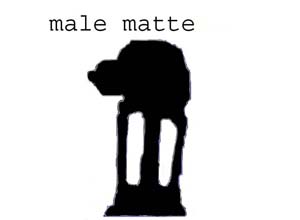 |
|
and a “female matte”. |
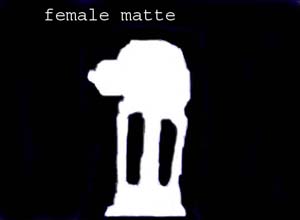 |
|
Then a background shot is packed using the “male matte” in order to have a
non-exposed hole that fits with the foreground element. |
|
|
In the same way, the “female matte” is packed with the
foreground element shot, so we get it in a non-exposed background. |
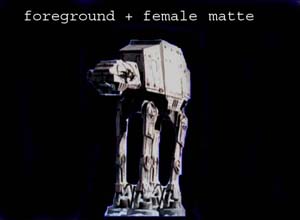 |
|
The two results are then packed together, obtaining the final shot of the
subject and the background. |
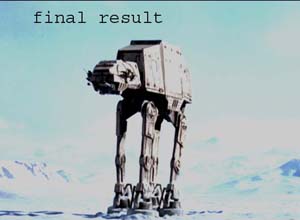 |